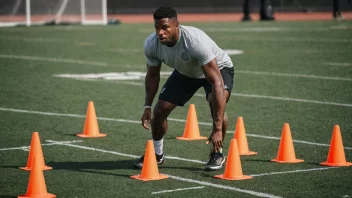Introduction
In today's digital age, running apps have become essential tools for athletes of all levels, from beginners to seasoned marathoners. With a myriad of options available, selecting the right app to enhance your running experience can be overwhelming. This article presents the top five tips to help you choose a running app that meets your specific needs while ensuring you stay safe and improve your performance.
1. Evaluate Your Running Goals
Before diving into the app store, it's crucial to identify your running goals. Are you training for a marathon, looking to lose weight, or simply trying to maintain a healthy lifestyle? Different apps cater to various objectives, so understanding your goals will narrow down your options.
2. Look for Customization Options
Not all runners are created equal, and a one-size-fits-all approach may not work for you. Choose an app that allows for personalized training plans, adjustable pace settings, and tailored workout recommendations. These features will ensure that your running program aligns with your individual fitness level and needs.
3. Check for Safety Features
Your safety while running is paramount. Many running apps now include features such as location tracking, emergency contacts, and the ability to share your location with friends or family. These safety features can provide peace of mind, especially when running in unfamiliar areas or during early morning or late evening hours.
4. Ensure Compatibility with Wearable Devices
If you own wearable technology, like a smartwatch or fitness tracker, it's essential to select an app that integrates seamlessly with these devices. Compatibility can enhance your running experience by allowing you to track metrics like heart rate, pace, and distance more accurately, providing a more comprehensive view of your performance.
5. Read User Reviews and Ratings
Before downloading an app, take the time to read user reviews and ratings. Look for feedback that highlights the app's reliability, ease of use, and any potential issues. This insight can help you avoid apps that may not live up to their promises and guide you toward those that have proven effective for other runners.
Conclusion
Choosing the right running app can significantly impact your training experience and overall performance. By evaluating your running goals, seeking customization options, prioritizing safety features, ensuring compatibility with wearable devices, and reading user reviews, you can make an informed decision. Remember, the right app is one that not only motivates you but also enhances your running journey while keeping you safe.






